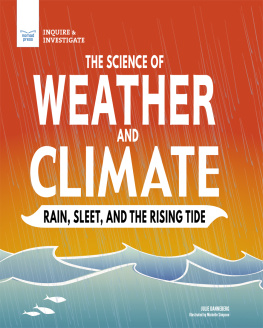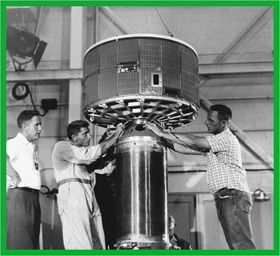Julie Danneberg - The Science of Weather and Climate: Rain, Sleet, and the Rising Tide
Here you can read online Julie Danneberg - The Science of Weather and Climate: Rain, Sleet, and the Rising Tide full text of the book (entire story) in english for free. Download pdf and epub, get meaning, cover and reviews about this ebook. year: 2020, publisher: Nomad Press, genre: Children. Description of the work, (preface) as well as reviews are available. Best literature library LitArk.com created for fans of good reading and offers a wide selection of genres:
Romance novel
Science fiction
Adventure
Detective
Science
History
Home and family
Prose
Art
Politics
Computer
Non-fiction
Religion
Business
Children
Humor
Choose a favorite category and find really read worthwhile books. Enjoy immersion in the world of imagination, feel the emotions of the characters or learn something new for yourself, make an fascinating discovery.
- Book:The Science of Weather and Climate: Rain, Sleet, and the Rising Tide
- Author:
- Publisher:Nomad Press
- Genre:
- Year:2020
- Rating:5 / 5
- Favourites:Add to favourites
- Your mark:
The Science of Weather and Climate: Rain, Sleet, and the Rising Tide: summary, description and annotation
We offer to read an annotation, description, summary or preface (depends on what the author of the book "The Science of Weather and Climate: Rain, Sleet, and the Rising Tide" wrote himself). If you haven't found the necessary information about the book — write in the comments, we will try to find it.
A fascinating, full-color introduction to the earth science happening over our heads, packed with STEM experiments and science-minded research projects that invite kids ages 12 to 15 to explore the wonderful world of meteorology through real-world connections!
Take a look out your window. Whats the weather like today? Has it changed much from morning to afternoon? What is the difference between weather and climate? In The Science of Weather and Climate: Rain, Sleet, and the Rising Tide, middle schoolers learn the science behind why it snows, how wind is formed, what makes one region hot and dry and another region cold and damp, plus lots more! By studying the atmospheric sciences of meteorology and climatology, kids learn to connect the weather they experience on a daily basis in their town with the changing conditions across the entire planet.
- Readers learn that the difference between weather and climate is a difference in measurementweather is measured on a daily, even hourly basis, while climate is observed across decades and even centuries. As the planet warms, these changing climate conditions cause a rise in extreme weather events across the planet and create the need for a new understanding of how human behavior affects the atmosphere and, eventually, our own environments.
- Science-minded STEM activities such as creating your own barometer, testing the effects of air pressure, and tracking the effects of uneven heating on the earths surface encourage young readers to think like scientists while critical thinking exercises, essential questions, fascinating facts, links to online resources, and more encourage readers to explore this incredible planet.
About the Inquire & Investigate Earth Science set and Nomad Press
The Science of Weather and Climate: Rain, Sleet, and the Rising Tide is part of a set of three Inquire & Investigate Earth Science books that explore the earth, the atmosphere, and everything in between. The other titles in this series are Rocks and Minerals: Get the Dirt on Geology and The Science of Natural Disasters: When Nature and Humans Collide.
Nomad Press books in the Inquire & Investigate series integrate content with participation, encouraging readers to engage in student-directed learning. Combining content with inquiry-based projects stimulates learning and makes it active and alive. Nomads unique approach simultaneously grounds kids in factual knowledge while allowing them the space to be curious, creative, and critical thinkers.
All books are leveled for Guided Reading level and Lexile and align with Common Core State Standards and Next Generation Science Standards. All titles are available in paperback, hardcover, and ebook formats.
Julie Danneberg: author's other books
Who wrote The Science of Weather and Climate: Rain, Sleet, and the Rising Tide? Find out the surname, the name of the author of the book and a list of all author's works by series.















 Interested in primary sources?
Interested in primary sources? weather and climate
weather and climate










